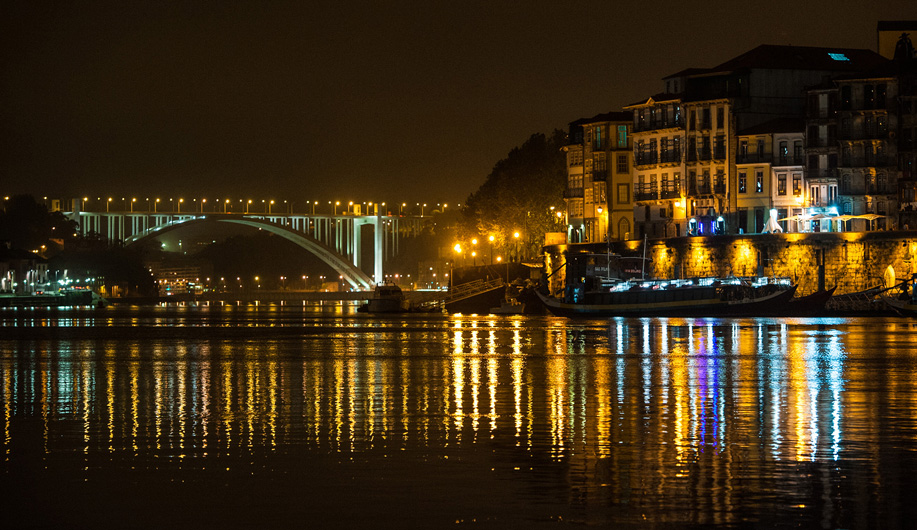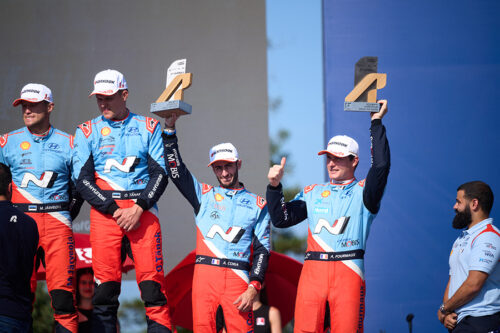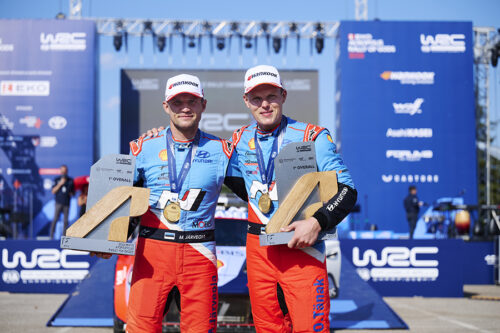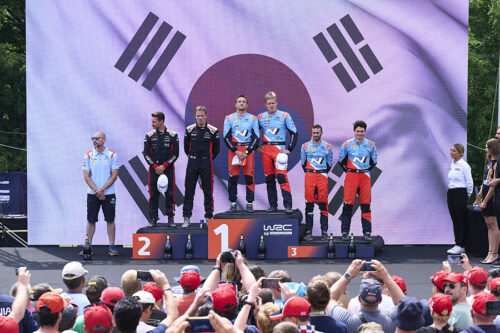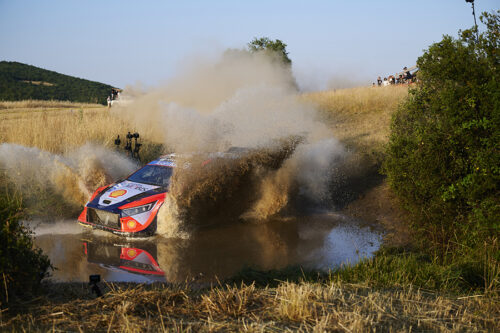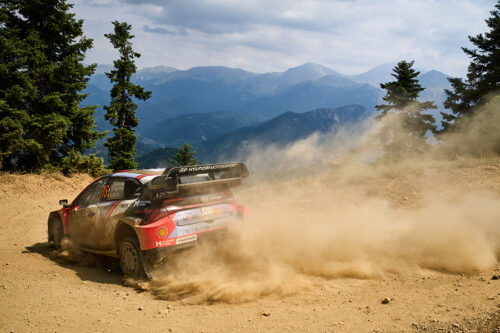Recce Updates McKlein’s Rally Tips have now been updated after our rally recce. You will be able to find the latest insights highlighted, to give you the most up-to-date overview for this rally.
Portugal remains one of the classic rallies of WRC; it’s an event that truly engages the passion of a nation. The Portuguese love motorsport and it’s no surprise that this event attracts huge crowds of fans. The rally has had a nomadic existence and somewhat chequered history since it first ran in 1967. In the early days it used to be based near the capital city of Lisbon, before moving further north in the 1990s with a finish near Porto. The 2001 event was held solely around Porto, but amid torrential rainstorms that were severe enough to be declared a national disaster. The floods severely compromised the running of the 2001 event and, in the aftermath, Rally Portugal endured a six-year hiatus from the championship, before coming back in a completely new format in the southern Algarve region. 2015 saw a return to north with the Matosinhos Exponor near Porto used as the Rally HQ and Service Park. The last relocation meant a return of some of the most famous stages from WRC history; none more so than the Fafe test, featuring the most iconic jump of them all.
Rally Portugal poses some particularly tricky set-up decisions for the teams and drivers. Tyre management is a big issue, whether to go with hard or soft rubber is often a tough choice. Soft offers more grip, however push too hard on soft tyres and they will wear away very quickly. The weather can also play a major role in deciding this rally, as conditions can change very quickly on this exposed part of Western Europe. Fog on higher ground is quite common and it can be sunny one day, only for rain to come on the next. This is something any stage visitor should be fully aware of and therefore it’s advisable to pack some waterproof clothing, just in case.

Porto airport is fully international and the only one to use for flying in to this rally. There are literally hundreds of hotels in and around the city, however for a more romantic and rustic experience McKlein would recommend staying in the nearby town of Guimares. The historic town centre of Guimares is an authentic evolution of a medieval settlement and ironically, since the floods of 2001 has been listed as a UNESCO World Heritage Site.
Porto is an old and charming city and somewhere you must visit if you are close by. The rally base of Matosinhos is north of the river Douro and you should spend a day and night close to that river. On its northern side and next to the old Ponte Luis 1st bridge you haven the Cais da Ribeira district. This area is full of quaint little restaurants, which come alive after sunset and are perfect for evening dining with plenty of choice. Just opposite on the southern side of the river you have many of the world famous Port wine distilleries to visit, with plenty to see there. This side is actually not called Porto but Vila Nova de Gaia.

Thursday
Shakedown: Paredes – Baltar, 4.60km
This shakedown test features a 4km blast through a forested area before a sprint finish around part of the Baltar rallycross track. There really is only one place to recommend here and that is the natural gravel arena provided by the Baltar circuit. The best vantage point is where the WRC cars enter the arena over a small jump.
Ceremonial Start: Guimares
The pre-start holding area is close to the medieval centre of this historic town and well worth a visit. You can get a close up view of the latest generation 2017 WRC cars, join the excitement of the WRC driver’s autograph session and see the cars flagged off in a old-world, theatrical style, ceremonial start. It’s a pleasant and relatively relaxed start to quite a hectic rally.

SS1: Lousada, 3.36km
Another blast around a rallycross track, but it’s a really good one. Lousada is one of the most famous circuits of them all and this track attracts a massive crowd to see the cars face each other in a head-to-head showdown. If you position yourself on the spectator banking around the last sweeping left-hand corner you will see the drivers hold their cars in amazing long drifting power-slides. It’s the best place to watch.
Food and drink:
Guimares is by far the best place to go on this day. The old town centre has a vast choice of restaurants, cafes and bars.
Friday
SS2/5: Viana do Castelo, 26.70km
This is the first stage in a loop of three, all north of Porto and driven twice. The opening 4.7km of this test are completely new, however it gets really interesting in the section from km 5 – km 7. Here you will find a big variation of corners in a completely open landscape. At 6km there is a man-made jump, then from km 7 the stage gets slightly more technical as it travels beside some water ponds. The ponds are very popular with the regular WRC photographers, who can practice their panning techniques and water reflection shots. Because of the proximity to the towns of Viana do Castelo and Carreço, the access to this area could be extremely crowded indeed, particularly as the stage now runs on one of the roads which was access in 2016. The best advice would be to arrive early and take a packed lunch with you. It is also very close to the sea, uphill and exposed, so warm and waterproof clothing could also be needed.

SS3/6: Caminha, 18.10km
The Caminha stage is probably the best of the loop for spectating on and it will run in the reverse direction to 2016. The first choice of locations comes in at km 3.3. This is a fabulous spot because you can climb up a banked hillside for an overview of the competitors tackling several corners for about one kilometre, all in a stunning landscape. The access to this point can be found off the N305 road between Âncora and Orbacém, turn towards ‘Vile, Campo de Tiro’ and follow the road for 4km. At km 6.6 there is a fascinating intersection-left on asphalt, with an extremely fast gravel approach and exit. This place has simple access, following an asphalt country road at km 2.2 on the N301.
Another good recommendation on the Caminha stage is at km 12.1. In this area you will find a technical and fast sequence as well as an interesting jump amidst a beautiful landscape. It has the wow factor. To reach this point take exit 28 of the A28 motorway and at the first roundabout follow the direction ‘Dem, Miradouro N. Sra das Neves’ After 600 metres turn right towards ‘Miradouro’ and you come to the stage after a further 1km.

SS4/7: Ponte de Lima, 27.46km
Again this is run in the reverse direction to 2016 and despite being the longest of the three gravel stages, if offers few opportunities for great spectating because so much of the stage is in a heavily forested area. For the second pass in the afternoon the road is typically very rutted, which can cause unexpected problems as it did in 2016 when a few cars went off in the same corner, with one catching fire and burning out. One location worth considering is near the start of the stage at km 4.4. It’s quite a fast section and you can find decent viewing spots on high banks beside the road. The cars could look very dramatic bouncing out of any ruts when the stage is run as SS7. To get there you turn off the N201 road at km 20.8 and follow a gravel road for 2 kilometres.

SS8/9: Braga Street Stage, 1.9km
This is a completely new asphalt street stage in the town of Braga. The rally organisers have posted an online video of this stage and it does look quite special. Close to the start the cars pass by some stunning architecture after which you will find a jump at the mid-way point. As with many of these types of city street stages, your first issue is how best to get there? And the second is what you can you see when you are there? Without having seen it first hand, it is difficult to advise.
Food and drink:
Having never experienced any of the restaurants in this region it’s impossible to recommend anything. There are lots of small towns and villages along Friday’s route, so the best advice is to be brave and just pick one.
Saturday
SS10/13: Vieira do Minho, 17.43km
The first really good spectator location comes early in this stage, at km 1.1 from the start. This is a very scenic area with wide panoramic views of several very fast corners. There is a choice of access roads to use, both coming in from the north. The best choice for viewing comes at km 12.4, where the scenery is quite stunning. From this area it is possible to see the cars for more than 1km on the stage, tackling a range of different corners. To access this point take the road from Vieiro do Minho to Viela village. In Viela follow signs to ‘Serra de Cabreira’, you will reach the stage after 2km.

SS11/14: Cabeceiras de Basto, 22.30km
This is a new stage for 2017, with only one truly worthwhile location to recommend for spectating. It comes right in the middle of the stage at km 11.1 and here you will see a very spectacular high-speed approach to a right hand hairpin, after which the cars accelerate away at full throttle. The access to this point is off the main N103 [Braga – Chaves] road, you turn off and follow the direction Botica Central, then Zebral.
SS12/15: Amarante, 37.55km
Amarante does feature some big changes in elevation, with the best viewing spots coming towards the stage end. At km 28.2 there is a spectacular 90° junction right followed by a fast downhill section, in a good scenic landscape. To reach this point take the access from the south at the main IP4 motorway junction 21 (km 77) from there you follow the municipal road signposted to ‘Marao’. Next up is a tight right-hand hairpin, located in open countryside at km 36.4. To access this place, leave the IP4 at exit 19 (km 67) and then follow the N15 towards Aboadela. After a further 1.2km turn right onto a gravel road and continue for 2.5km to reach the location.
Food and drink:
The best choice for this day has to be a visit to Amarante, which is central to the stages and has lots of choice for places to eat.

Sunday
SS16/19 (Powerstage): Fafe, 11.18km
If you have never been to this stage before then you absolutely must experience it once in your life. The two main options are towards the stage end, the first at km 9 and the second km 10.7. At the 9km mark, there is a series of downhill gravel turns before the stage joins a wide asphalt section for just 100m, after which it turns sharp right back onto gravel. This complex of corners and junctions attracts thousands of spectators and the atmosphere is something special. The access is straight from the town of Fafe to the junction on the main asphalt road.
At km 10.7 you will the famous huge Fafe jump, which is instantly recognisable from all the photographs taken there throughout the years. The access to the stage end is extremely busy, however some shuttle buses are in operation to help. The important advice is to arrive extremely early.
There is also another, lesser-known big jump on the Fafe stage, which has a strong argument for spectators to choose it. The location is at km 8, where there’s not only a jump, but also an overview of approximately 1km of the stage to be seen. Access to this area comes via the less crowded I800 asphalt road from the east.

SS17: Luilhas, 11.91km
900 metres after the start there is a jump in a fast downhill section with a right-hand junction just 150 metres afterwards. The entry speed is high, so this corner could be interesting. The public national road runs very close and parallel to the stage at this point, so the access is really easy.
At km 5 there is a very open scenic location on top of a small mountain where [on a clear day] you have a stunning view of over 1km of action. The road is quite narrow but also technical, giving you the opportunity to see the World’s best drivers at work. To access this point turn off the N202 [Fafe – Arco de Baúlhe] road at km 63.4, taking the tarmac municipal [Cruz Nova street]. After 600 metres turn left onto gravel, then after a further 1.8km turn left. Continue along this road uphill and you will reach the stage in 2km.
SS18: Montim, 8.66km
From a spectating standpoint, we can report that there is absolutely nothing worth recommending on this new stage. It’s a much better option to pick one of the amazing places on the Fafe stage, particularly as that’s the only stage on Sunday which is run twice.
Food and Drink:
The town of Fafe has plenty of restaurants, bars and supermarkets for stocking up. In amongst the spectator areas at the stage finish you will find plenty of mobile catering units selling sandwiches and drinks.
-01.png)
